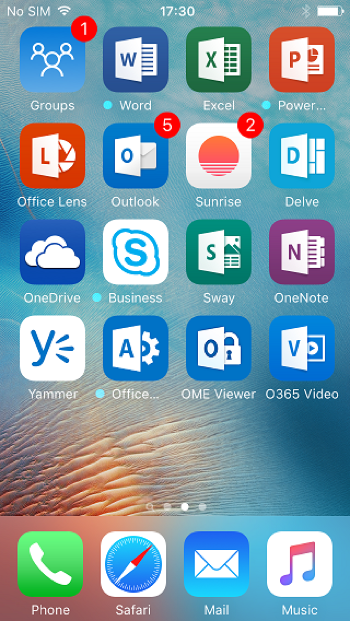The nice people at SurveyMonkey sent me a note about their blog post of 20 April titled “Office 365 vs. Google Apps: Microsoft struggles to compete on mobile” to outline the case that Google has outpaced Microsoft in every (mobile application) category. However, I’m not sure that the arguments they advance are on the mark.
SurveyMonkey is quite correct to observe that “Office is increasingly important to Microsoft’s bottom line.” They then say that mobile represents the biggest opportunity for Office. Although there’s no doubt that Microsoft has put considerable effort into making sure that all of their Office apps have a mobile companion, my guess is that these apps are facilitators – ways for people to get to their data when they are mobile – rather than the central story. In either case, there’s certainly an impressive array of Microsoft Office mobile apps available for iOS (see picture) and Android.

On a business level, the real story is in the growing numbers of Office 365 commercial users (now 70 million active users according to Microsoft) and the fact that commercial cloud products, which include Office 365, are now at a $10 billion annual run rate, half way to the $20 billion target set by CEO Satya Nadella to be attained by the end of Microsoft’s 2018 fiscal year. Microsoft makes money from the Office 365 licenses they sell to businesses and consumers and that’s how they make up the decrease in traditional Office desktop sales.
But getting back to mobility, the post says “In email, Google’s app usage outpaces Microsoft by 14 times” as Gmail plus the Inbox by Gmail app has some 97.3 million active users against 6.6 for Outlook. I’m assuming that they mean the Outlook for iOS and Outlook for Android apps here. If so, back in October 2015, many reports (like this one) quoted Microsoft as saying that they had over 30 million users of those apps. I imagine that a few more downloads and installs have happened since, so the actual number of Outlook users is probably far more the 6.6 million cited here. Many observers consider that the Outlook app is the best Gmail client available on the market. However, I guess that’s all down to personal choice.
Any survey can be off in one number. The figures for Google Drive, Docs, Sheets, and Slides far exceed their Microsoft counterparts in OneDrive, Word, Excel, and PowerPoint. Leaving aside OneDrive, which has had some well-known issues in the past, I just don’t believe that the Google apps are used more heavily than their Microsoft counterparts. What I think is true is that Google only has online versions of their apps so any use can be noted by surveys that analyze network traffic.
On the other hand, given the choice between using Word Online and Word desktop to interact with a complex document, I know which option I’ll take. The same is true for Excel and PowerPoint. In short, the use of the Microsoft apps is probably obscured by the way people edit on desktops and load to SharePoint or other repositories (or circulate as attachments). At that point, the mobile versions of Word, Excel, etc. become viewers rather than creators of content. The fact that the Office apps for iOS need an Office 365 license to edit content (the free versions are read only) also reinforces the kind of traffic that these apps likely produce. Any attempt to measure app usage by network traffic has to be viewed in that light.
SurveyMonkey concludes that “Google’s (sic) has the odds stacked in its favor.” Yep, if we just count the number of Android clients and the use of the Google apps such as Gmail by consumers. But I suggest that the situation is different if you consider factors such as those outlined above and the simple but unescapable fact that Microsoft has a large installed base of Office users that it can move to Office 365 commercial or consumer using mobile apps for Windows Phone, Android, and iOS. Google has the edge in consumer, but it’s running a poor second in commercial.
In short, the statement that “Google is beating Microsoft in productivity in mobile” is just plain wrong in my book. I think it’s based on a flawed understanding of the market, especially in relation to what’s happening with Office 365, and perhaps overly influenced by a reliance on an analysis of network activity that compares apples (the pure online use of Google apps) with oranges (the hybrid use of Microsoft apps).

